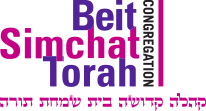
Spreading the Love of the Sukkah
יִמְצָאֵ֙הוּ֙ בְּאֶ֣רֶץ מִדְבָּ֔ר וּבְתֹ֖הוּ יְלֵ֣ל יְשִׁמֹ֑ן יְסֹבְבֶ֙נְהוּ֙ יְב֣וֹנְנֵ֔הוּ יִצְּרֶ֖נְהוּ כְּאִישׁ֥וֹן עֵינֽוֹ׃
[God] found him in a desert land, and in the wastes of a howling wilderness; [God] encircled him, made him comprehending, guarded him like the pupil of his eye.
–Deuteronomy 32:10
In the poetic song contained in this week’s Torah portion of Haazinu, Moses reminds the Israelites of God’s reliable kindness and protection. Rashi explains…The Children of Israel, while in the wilderness, were surrounded by God’s loving presence in several specific ways [1], but the one that we celebrate annually is the Sukkah.
A Sukkah – סכה, is a temporary dwelling that can have four, three, or two and a half walls. The letters of the word itself allude to the walls though their own shape [2] – the four lines that form the “ס,” the three of “כ,” and the two and a half of “ה.” In the Sukkah’s fullest form, represented by the “ס,” the total enclosure symbolizes a compassionate embrace. The letter “samech – ס”, when spelled out – סמך, means “support” [3] and additionally stand for סלח מחל כפר – pardon, forgive, atone [4], alluding to Sukkot’s arrival after Yom Kippur [5] and our expected posture towards one another.
The “samech – ס” is the 15th letter in the Hebrew alphabet and has a numerical value of 60. It’s placement in the alphabet follows after the letter “nun – נ,” which represents falling – nafilah, and creates a sequence where the assistance of the “samech – ס” is generally understood as a response to the descent of the nun. We find an application of this on the calendar as well; 60 days after the 15th of the Hebrew month of Av, which starts a new path away from the saddest day on the calendar [6], the festival of Sukkot begins on the 15th of the month of Tishrei, empowering us to prevent future stumbles by taking care of each other.
In the mystical work of Sefer Yetzira, the Book of Creation, the “samech – ס” governs sleep. One of the special components of the commandment to dwell in the Sukkah is that it can be fulfilled even while one is asleep. Performing this mitzvah, while in an unconscious state, highlights a unique aspect of the sukkah experience: it is particularly when our eyes are closed that our faith in God’s watchfulness is uniquely expressed. [7]
Moses describes the Divine guarding as “כְּאִישׁ֥וֹן עֵינֽוֹ“, which is hard to translate. While Rashi explains it to mean “the dark part of the eye,” the Paaneach Raza [8] understands the phrase to mean “the eyelids covering the eye while one sleeps.” He explains that “כְּאִישׁ֥וֹן”, the covering, gets its name from the word for sleep “שינה.”
The rabbis compare the opening and closing of the eyes to the opening and closing of the Ark in the Temple. It is for this reason that the verses [9] describing the Ark (וַיְהִ֛י בִּנְסֹ֥עַ הָאָרֹ֖ן) are framed with two upside down “nuns,” appearing as two eyelids [10]. The shutting of the eyes, in an attempt to ignore the suffering of others, enables and perpetuates the hardships of society.
During the holiday of Sukkot, in the grace after meals, many communities customarily add the request of “הַרָחֲמָן הוּא יָקִים לָנוּ אֶת-סֻכַּת דָּוִיד הַנּוֹפֶלֶת – May the Merciful One raise up for us the fallen sukkah of David.” The Arvei Nachal [11] observes that “הַנּוֹפֶלֶת – the falling” is actually in present tense; the breakdown of safe spaces is ongoing because we still aren’t viewing our interpersonal responsibilities properly.
King David says about himself “חָבֵ֣ר אָ֭נִי – I am an ally” to anyone who is engaged in advancing the cause of goodness. [12] The sukkah of David requires us to acknowledge God’s unwavering love for us and to extend that care to each other. The word “sukkah – סכה”, also stands for סמך כל הנופלים – support all [those who have] fallen [13], reinforcing our belief that while getting up is easier when we have friends to help [14], it is a holier act to keep folks from falling in the first place.
